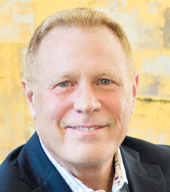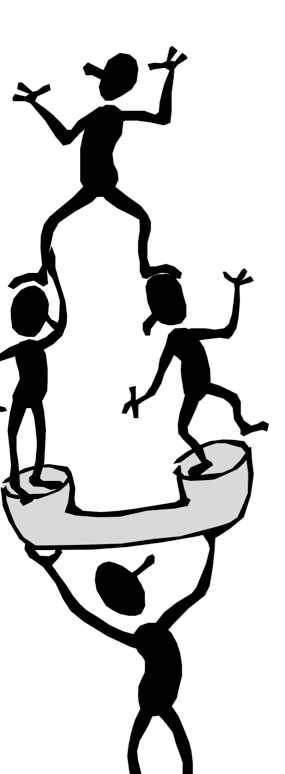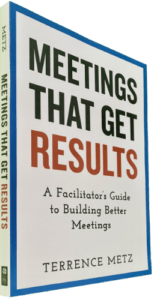The Role of Session Leader
You have a multitude of tasks to perform during the workshop. The success of the facilitator’s effort is dependent upon your skill, knowledge, and abilities as a session leader. The role of session leader includes both the traditional role of “Facilitator” discussed below and the role of “Meeting Designer” discussed below.
You can complete a project without facilitation, but you could also cut your own hair.
—Various
Responsibilities in the Role of Session Leader
Context represents the primary responsibility of the session leader, frequently called a facilitator—Responsibilities include:
- Actively listening to the discussion and challenging assumptions.
- Creating synergy by focusing on the group and using your facilitation skills to enhance communications.
- Ensuring that all participants have an opportunity to participate.
- Explaining and enforcing the roles.
- Keeping the group on track.
- Managing the documenters and the documentation process.
- Observing the group interactions and adjusting when necessary.
- Questioning to achieve clarity—aiding communication between participants and yourself.
- Recognizing disruptive behavior and creating positive corrections.
- Working to resolve conflicts that arise.
Key Success Element in the Role of Session Leader
Your role creates an environment where every participant has the opportunity to collaborate, innovate, and excel. Observing the team’s progress helps you understand the dynamics of the group and how your approach enhances or detracts from the final output.
The Group Dynamics
- Ask yourself the following questions while observing the group:
- How do they communicate? Eye-to-eye contact? Soft-spoken? Yelling? Gestures? etc.
- In what order do they speak? Primary, secondary, who backs who up? Who always gets interrupted?
- Which participant(s) appears to influence group direction the most?
- Who are these people talking to? Are they looking for supporters? Do they attack certain people or groups?
Meeting Designer in the Role of Session Leader
The meeting designer details the approach used by the meeting or workshop. Consequently, the meeting designer’s role typically changes throughout the project or product development. For example, in the planning phase, the meeting designer may be a strategic planner—someone who understands how to develop a consensual plan. In the analysis phase, the meeting designer may be a process expert, a business architect, or both. In the design phase, the meeting designer may be a workflow or design specialist.
Meeting or workshop responsibilities include:
- Helping the facilitator, business partner, and technical partner codify the deliverable and define the appropriate agenda steps to follow. Provides succinct questions to ask and the optimal order or sequence for the questions to be answered.
- Perhaps participating in workshops to ensure that the products produced satisfy the expected standards of quality and consistency—namely that others can act upon the deliverable effectively, such as the project team.
The meeting designer’s role is functional and not necessarily the role of an individual. The executive sponsor is sometimes the meeting designer with strategic planning. The session leader is frequently the meeting designer because they have MG RUSH structured facilitation training or experience. The facilitator can also fulfill this role because methods and approaches are generally neutral. Business or technical partners (i.e., project management) are sometimes methodologists. Therefore, look for the person or persons who is expert with the deliverable—who clearly understands the product to build and the approach to follow in building that product.
______
Don’t ruin your career by hosting bad meetings. Sign up for a workshop or send this to someone who should. MGRUSH workshops focus on meeting design and practice. Each person practices tools, methods, and activities every day during the week. Therefore, while some call this immersion, we call it the road to building high-value facilitation skills.
Our workshops also provide a superb way to earn up to 40 SEUs from the Scrum Alliance, 40 CDUs from IIBA, 40 Continuous Learning Points (CLPs) based on Federal Acquisition Certification Continuous Professional Learning Requirements using Training and Education activities, 40 Professional Development Units (PDUs) from SAVE International, as well as 4.0 CEUs for other professions. (See workshop and Reference Manual descriptions for details.)
Want a free 10-minute break timer? Sign up for our once-monthly newsletter HERE and receive a timer along with four other of our favorite facilitation tools, free.
Related articles
- Facilitate Meaning, Not Words (mgrush.com/blog)
- How to Facilitate Brainstorming (mgrush.com/blog)
- Five Ways to Facilitate Quiet People and Get Them to Participate More Fully (mgrush.com/blog)
- How to (Not) Gesture while Facilitating (mgrush.com/blog)
- Considerations on How to Facilitate between Europeans and Asians (mgrush.com/blog)
- 15 Fun and Quick Tips to Help You Become a More Successful Facilitative Leader (mgrush.com/blog)

Terrence Metz, president of MG RUSH Facilitation Training, was just 22-years-old and working as a Sales Engineer at Honeywell when he recognized a widespread problem—most meetings were ineffective and poorly led, wasting both time and company resources. However, he also observed meetings that worked. What set them apart? A well-prepared leader who structured the session to ensure participants contributed meaningfully and achieved clear outcomes.
Throughout his career, Metz, who earned an MBA from Kellogg (Northwestern University) experienced and also trained in various facilitation techniques. In 2004, he purchased MG RUSH where he shifted his focus toward improving established meeting designs and building a curriculum that would teach others how to lead, facilitate, and structure meetings that drive results. His expertise in training world-class facilitators led to the 2020 publication of Meetings That Get Results: A Guide to Building Better Meetings, a comprehensive resource on effectively building consensus.
Grounded in the principle that “nobody is smarter than everybody,” the book details the why, what, and how of building consensus when making decisions, planning, and solving problems. Along with a Participant’s Guide and supplemental workshops, it supports learning from foundational awareness to professional certification.
Metz’s first book, Change or Die: A Business Process Improvement Manual, tackled the challenges of process optimization. His upcoming book, Catalyst: Facilitating Innovation, focuses on meetings and workshops that don’t simply end when time runs out but conclude with actionable next steps and clear assignments—ensuring progress beyond discussions and ideas.




